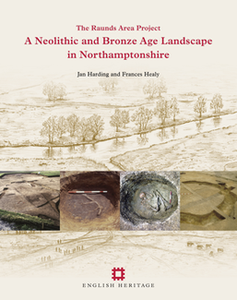English Heritage Archaeological Monographs
English Heritage, 2014. https://doi.org/10.5284/1028203. How to cite using this DOI
Data copyright © English Heritage unless otherwise stated
This work is licensed under the ADS Terms of Use and Access.
Primary contact
Historic England
The Engine House
Firefly Avenue
Swindon
SN2 2EH
Resource identifiers
- ADS Collection: 1416
- DOI:https://doi.org/10.5284/1028203
- How to cite using this DOI
The Raunds Area Project Volume 1: A Neolithic and Bronze Age Landscape in Northamptonshire
Healy, F., Harding, J.
English Heritage (2008)
Abstract:

The Raunds Area Project investigated more than 20 Neolithic and Bronze Age monuments in the Nene Valley. From c 5000 BC to the early 1st millennium cal BC a succession of ritual mounds and burial mounds were built as settlement along the valley sides increased and woodland was cleared.Starting as a regular stopping-place for flint knapping and domestic tasks, first the Long Mound, and then Long Barrow, the north part of the Turf Mound and the Avenue were built in the 5th millennium BC. With the addition of the Long Enclosure, the Causewayed Ring Ditch, and the Southern Enclosure, there was a chain of five or six diverse monuments stretched along the river bank by c 3000 cal BC. Later, a timber platform, the Riverside Structure, was built and the focus of ceremonial activity shifted to the Cotton 'Henge', two concentric ditches on the occupied valley side.From c 2200 cal BC monument building accelerated and included the Segmented Ditch Circle and at least 20 round barrows, almost all containing burials, at first inhumations, then cremations down to c 1000 cal BC, by which time two overlapping systems of paddocks and droveways had been laid out. Finally, the terrace began to be settled when these had gone out of use, in the early 1st millennium cal BC.
Download monograph
| The Raunds Area Project Volume 1: A Neolithic and Bronze Age Landscape in Northamptonshire, Healy, F.|Harding, J., English Heritage (2008), ISBN: 9781848021747 | 36 Mb |





